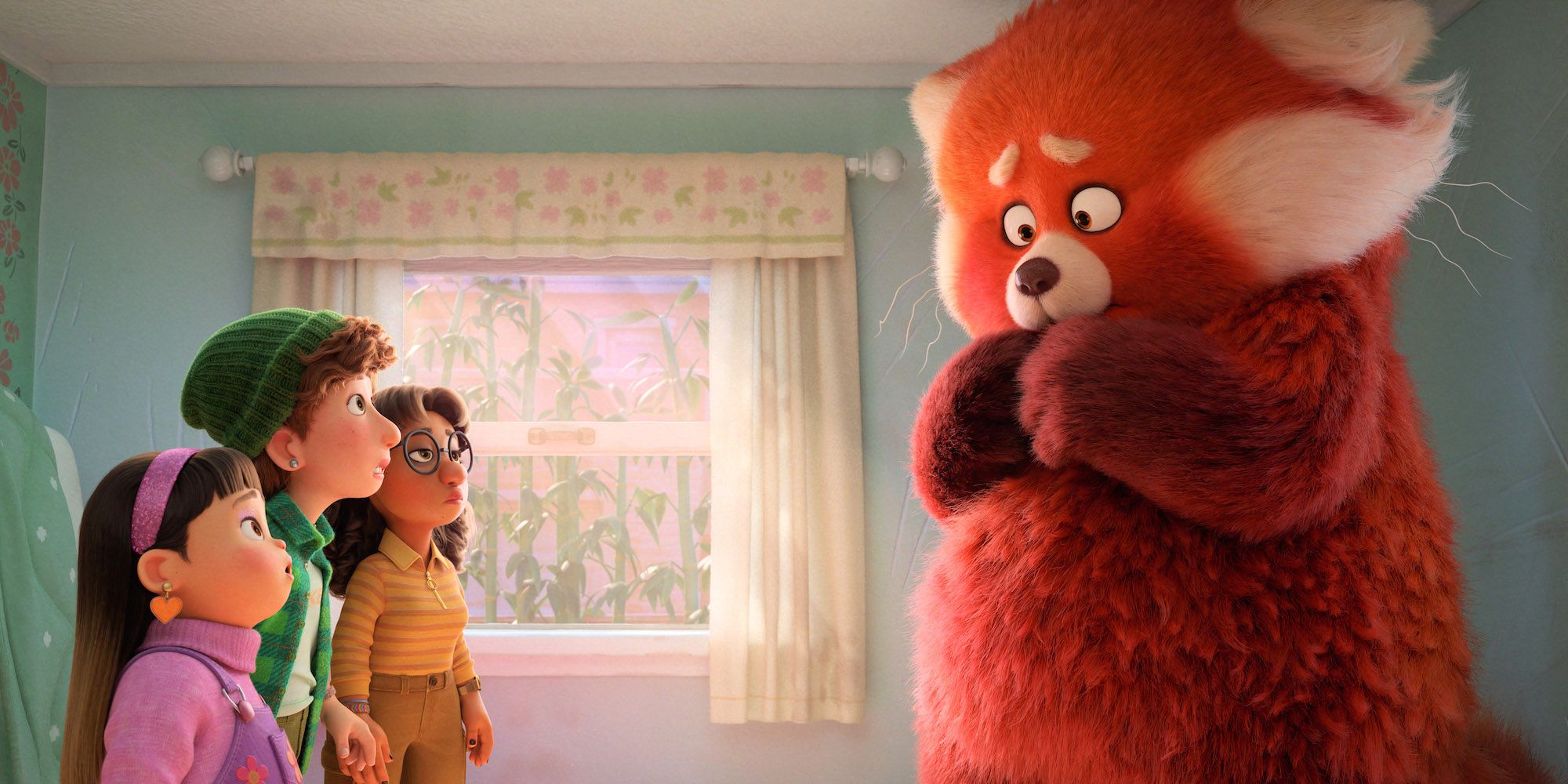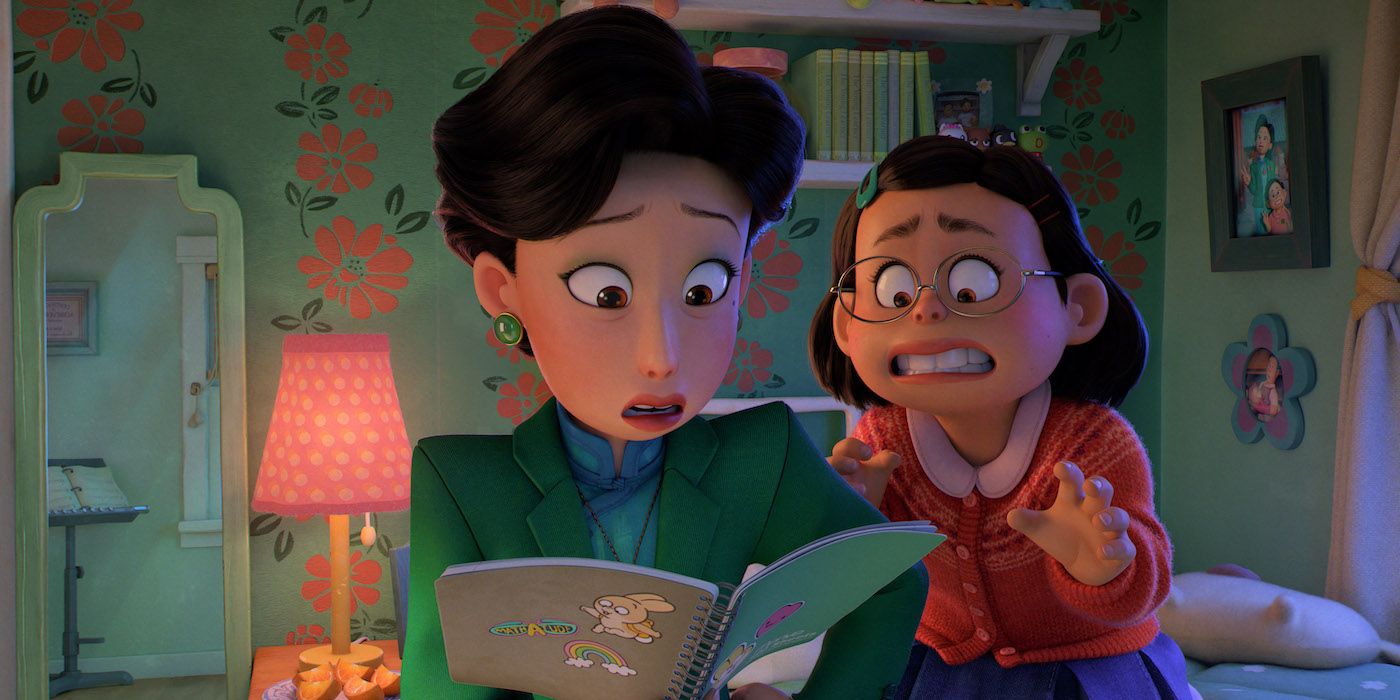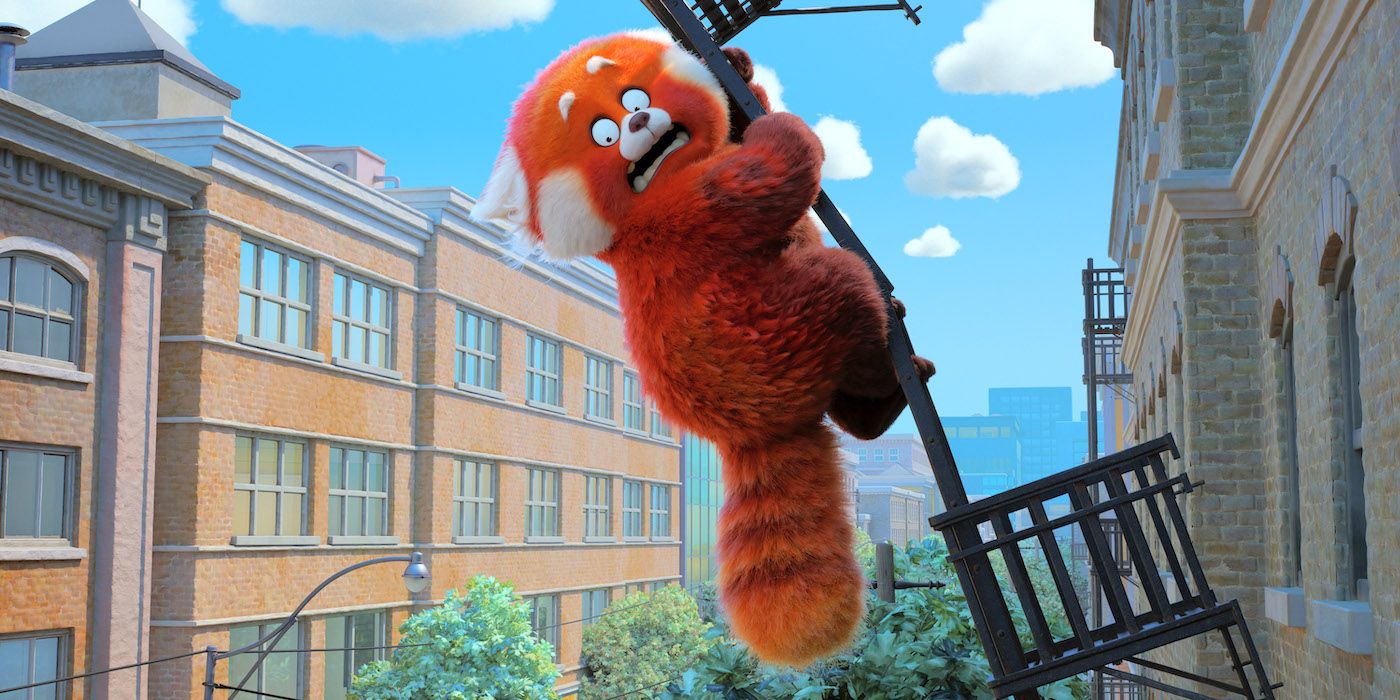Domee Shi's feature film debut as a director — she also won an Oscar for Pixar's Bao — is also a list of firsts. Turning Red is the first animated film to be helmed by a woman of color (Shi is Chinese-Canadian) and perhaps the first to be helmed by a woman from beginning to end. (Read Brenda Chapman’s statement regarding being replaced on Brave here.) Turning Red has a lively expression in its animation style and storytelling that comes from an immensely personal place. The connection that one feels for the characters and world-building are sourced from Shi and her creative team, including co-writer Julia Cho, sharing parts of their formative years with the audience. While many Pixar films have strong thematic messaging and narratives that resonate, Turning Red is perhaps the most personal of projects as it depicts a deeply intimate familial relationship — the bond between mother and daughter.
Turning Red is significant for several reasons that inform the characters, narrative, and themes of the film. In the opening scenes, audiences are not only introduced to Meilin "Mei" Lee’s playful world, but they're also welcomed into Shi’s own past. The film follows Mei (Rosalie Chiang), a confident, dorky 13-year-old torn between remaining her mother’s dutiful daughter and the chaos of adolescence. Her protective, if not slightly overbearing mother Ming (Sandra Oh) is never far from her daughter. The usual shenanigans that come with growing up are hard enough, but whenever Mei gets too emotional, she “poofs” into a giant red panda, and turning into a fluffy red panda (something which has a connection to her family) was certainly not something Mei factored into her adolescence.
Pixar fans may be delighted to witness a distinct deviation from the studio's typical animation model. Turning Red’s styling is heavily influenced by the cartoons and anime of the late 1990s and early 2000s. The exaggerated character movements and expressions go in the opposite direction of what recent Pixar films have aimed to accomplish. The goal isn't to craft a realistic or lifelike portrayal of people and places through animation technology; there is a bolder creative direction that embraces a logic-defying animation style in Turning Red. This approach allows the manifestation of the giant red panda to stand out more, as the fluffy and soft texture of the fur is exemplified. When Mei’s friend Abby (Hyein Park) begs to be held by the panda, we fully understand the significance.
Mei’s story, as well as the film's overall aesthetic and style, is heavily steeped in the culture of the early 2000s. As it is a personal love letter from Shi to mother-daughter relationships and coming-of-age, the film draws from her roots and experiences growing up during this particular time period. Just as she did in her award-winning short Bao, Shi has infused Turning Red with a great deal of culture and personal experiences. In the feature format, she can step outside of the home and create a fully realized reality that, while comically exaggerated to a point, is authentic. There is a genuine love for this era that has informed so much of Shi’s personality and life experiences. As she imbues the film with these things, including the cultural nuances of growing up in a traditional Chinese household in Canada, the film transforms into the most personal form of self-expression Pixar has ever produced. Turning Red isn’t just a Pixar film with a whimsical story for all to enjoy, it is an animated diary that comes to life while inviting viewers to experience someone else's world for a brief amount of time.
Turning Red will be relatable to so many young people going through this difficult and often embarrassing age, as well as adults who will remember that time period of their lives. There is a hilarious reference to menstruation, a horrifying time for any person who will experience this biological function. While it doesn't directly engage with the reference, it's an allegory for this time in Mei's life. The first 30 minutes explore all the different ways that coming of age will impact a mother's relationship with her child: from personal preferences — such as friends and hobbies — that kids choose to engage with to that pesky stage when a young teen enters their phase of sexual awakening (a phase that can be mortifying for everyone). The physical changes, in particular, become a manifestation that so many mothers fear; it means their child is growing up.
Turning Red turns that on its head by having Mei’s physical transformation be that she turns into a cute and fluffy red panda. The film has everything. It is technically astounding. It is beautiful to watch, it is so brightly lit and colorful. Pure joy permeates throughout the entire film. The animation style is as excitable as the lead characters. There is a great deal to enjoy with how specific the film is as well. Toronto is the perfect setting to tell this story of a mother and daughter's experience with getting older, something which greatly affects their relationship. It is also the perfect backdrop for the battle between tradition and modernity. What further illustrates this theme is Mei and her friends' musical obsession with 4* Town, a five-member boy band that nearly every generation will have a real-life proxy to. 4*Town being a part of the central narrative helps to bring all of the themes and character development together. To get us invested in Mei's world, the creative team enlisted the help of Billie Eilish and Finneas O'Connell to write original music that is pitch-perfect for this time period (and will be stuck in viewers' heads after).
Domee Shi’s Turning Red is a deeply personal and highly relatable story that is bursting with creativity, nostalgia, and joy. It is one of the most ambitious Pixar animations, with a perfectly balanced story that draws on cultural mythology, personal experiences, pop culture, and more. The narrative and plotting are well-paced and perfectly drawn out, hitting viewers with deeply impactful moments that are never undercut by the film's whimsy or humor. Yes, audiences might cry from laughing so hard and cry again during the emotional confrontation between Mei and Ming. There is no single frame of this film that isn’t maximizing this story's potential, its wit, humor, or charm. Every moment counts and transforms Turning Red into a visual feast.
Turning Red begins streaming on Disney+ on Friday, March 11. The film is 100 minutes long and is rated PG for thematic material, suggestive content and language.



